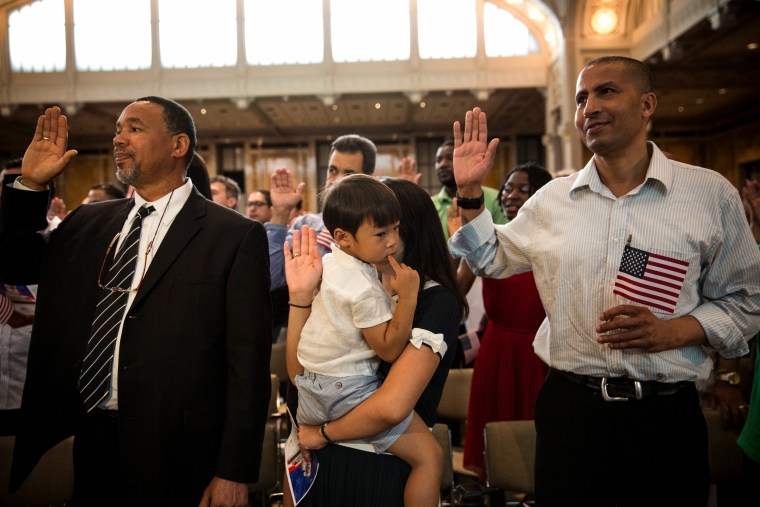One in 4 children in the United States have at least one immigrant parent — underscoring the nation's growing diversity and the impact that policies surrounding immigration and families can have on so many children.
About 18.6 million children have at least one foreign-born parent, according to a new report from the Urban Institute. About 7 million of the immigrant parents— almost 4 in 10 — are from Mexico, with another 3.5 million from Central and South America, and the rest from around the globe.
Immigrant parents don't mean these families are new to the U.S.
“Something that we found that might be surprising to some readers, given the conversations about immigration these days, is that most parents are not new immigrants,” Hamutal Bernstein, a senior research associate at the Urban Institute, said.
In fact, more than three-quarters of children have parents who have been in the U.S. more than a decade. Only 11 percent have been in the U.S. for fewer than five years.
In addition, “the majority of the parents are immigrants (61 percent) who are U.S. citizens,” Bernstein said. More than 9 in 10 children (91 percent) are U.S. citizens
About 39 percent (7.2 million children) have non-citizen parents — which includes people who are undocumented, have green cards, visas or temporary protections.
Bilingual, two-parent households, lower incomes
Not surprisingly, more than half of U.S. children in an immigrant parent household are bilingual, compared to fewer than 5 percent among children of U.S.-born parents. In an increasingly global economy, the researchers said, this is a plus.
Children of immigrant parents are also more likely to grow up in a two-parent household — 80 percent compared to 69 percent for those with U.S.-born parents.
While the large majority (almost 8 in 10) of immigrant parents have a high school or college degree, 20 percent live in a household where the parent didn't graduate from high school, which puts the children at a higher risk of low economic mobility, the researchers found.
And while more than 9 in 10 children of immigrants see parents working very long hours, almost half live in low-income families, compared to just over a third from U.S.-born parents.
“Families are working, but they’re not getting ahead [economically],” Cary Lou, research associate at the Urban Institute told NBC News.
Changing destinations
Even though most children of immigrants (62 percent) live in six states including California, Texas and New York, these parts of the country have not seen a significant increase in children with immigrant parents.
In fact, California saw a one percent reduction in the share of children with immigrant parents between 2016 and 2017, though it's the state with the most children of immigrants.
Instead, states such as North Carolina and Nebraska are seeing a rise in immigrant parent families.
In North Carolina, 19 percent of children had an immigrant parent in 2017, an increase from 12 percent in 2006. In Nebraska, 16 percent of children have an immigrant parent.
“This reality means that immigration policy developments are relevant in states and localities all across the country, not only in states that have large immigrant populations currently,” the report says.
Policies should be rooted in evidence, experts say
With these realities in mind, Bernstein said it’s important to keep in mind “the ripple effects” U.S. immigration policies could have on children's lives and their economic future.
Ending temporary protections against deportation (TPS), cutting admissions of refugees and asylum seekers into the country, and limiting access to green cards and temporary visa applications are some of the current immigration policies that “may jeopardize their well-being, separate them from their families, and undermine their development,” according to the report.
The fear such policies have instilled on families across the nation has caused “a chilling effect” that has led many immigrants to stop using food and government subsidized health programs, which have adverse effects on children and may violate their rights to access such benefits, Bernstein said.
The researchers hope that the newly published research and the complimentary interactive tools can help lawmakers better understand immigrant families’ realities in order to craft policies that reflect the deep connection that exists between immigrants and U.S. citizens.
FOLLOW NBC LATINO ON FACEBOOK, TWITTER AND INSTAGRAM.

